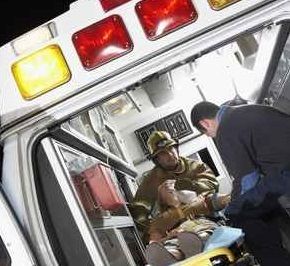Article
Stroke: Magnesium Sulfate Fails Prehospital Trial
Author(s):
Cross magnesium sulfate off the list of potential treatments to prevent post-stroke brain damage. Writing in the New England Journal of Medicine, Jeffrey Saver, MD and colleagues reported on FASTMAG, a test in which paramedic ambulance crews administered magnesium sulfate to apparent stroke patients at the site of the 911 call. The treatment was shown to be safe, with no difference in mortality between the treatment group and patients who got a placebo. But there was no significant shift in 90-day disability outcomes.

There are 70 known agents that are neuroprotective and are candidates as early-intervention treatment for apparent stroke patients. But a phase-3 trial of administering one of those agents, magnesium sulfate, in a prehospital setting, had disappointing results in Los Angeles, CA..
Writing in the New England Journal of Medicine, Jeffrey Saver, MD and colleagues reported on FASTMAG, a test in which paramedic ambulance crews administered magnesium sulfate to apparent stroke patients at the site of the 911 call. The treatment was shown to be safe, with no difference in mortality between the treatment group and patients who got a placebo. But there was no significant shift in 90-day disability outcomes.
Magnesium sulfate seemed like it ought to work, the researchers said. That is because it “is reliably cerebroprotective in diverse animal models of stroke” the authors wrote, as well as being inexpensive, easy to administer, and widely available. It is standard treatment for eclampsia and pre-eclampsia. The substance is vasodilatory and shown to be both neuroprotective and glioprotective.
Before the FASTMAG trial, magnesium sulfate had been shown not to work when administered 7.4 hours after a stroke. But the researchers hoped that by getting the substance into patients much quicker the therapy might show a benefit.
Enlisting the crews of 315 ambulances and staff at sixty 911-receiving hospitals in the Los Angeles area they were able to administer magnesium sulfate to more than 800 of these patients within a median time of 45 minutes post-stroke. The treatment was continued at the hospitals.
But to their disappointment, the researchers found there was no significant difference in either the death rate (15.5%) of these patients vs. placebo group or the rate of symptomatic hemorrhagic transformation of initial cerebral ischemia (2.7%) or the rate of asymptomatic hemorrhagic transformation (6.3%)
They theorized that either a single neuroprotective agent was not enough to prevent brain damage or that magnesium sulfate did not get to the brain soon enough, despite the experimental protocol.
The good news in the trial was that the researchers showed it was feasible to test the use of potential neuroprotective therapies in the setting of prehospital care. Cell phone communication between the paramedics at the scene and physicians worked well. “This approach reduced the proportionof enrolled patients with stroke-mimicking conditions to 3.9%, a proportion that is less than the 5% projected in sample-size calculations.” Patient consent was obtained either directly by paramedics by getting patients or “on-scene legally authorized representative” to sign forms, or by physician-investigators speaking to that person by cell phone. Instant internet translation into Spanish was also used when appropriate. Ninety-nine percent of patients or their representatives agreed to be part of the study.
All got to a hospital within a median time of 33 minutes, about the same as for patients transported who were not in the study.




